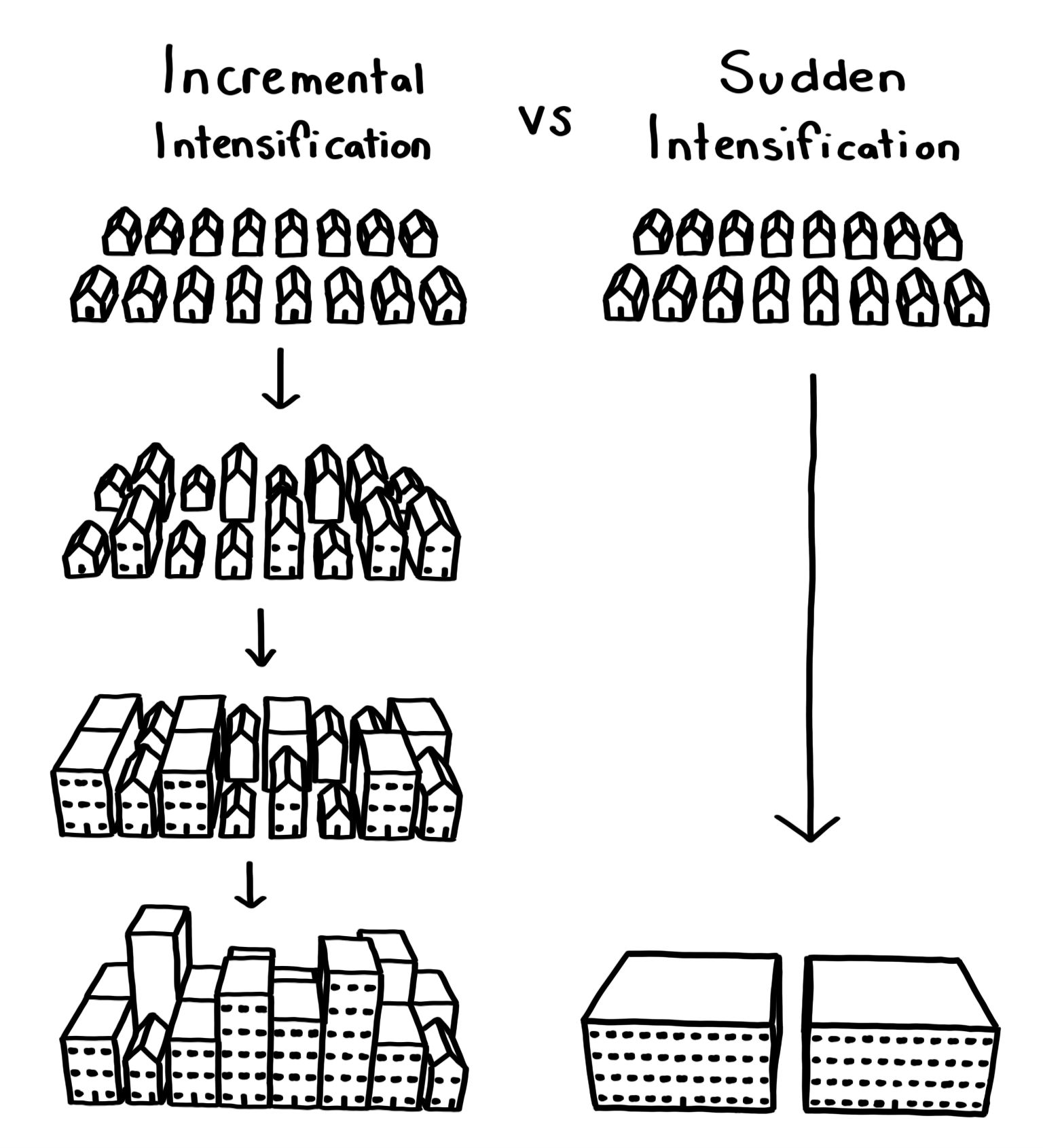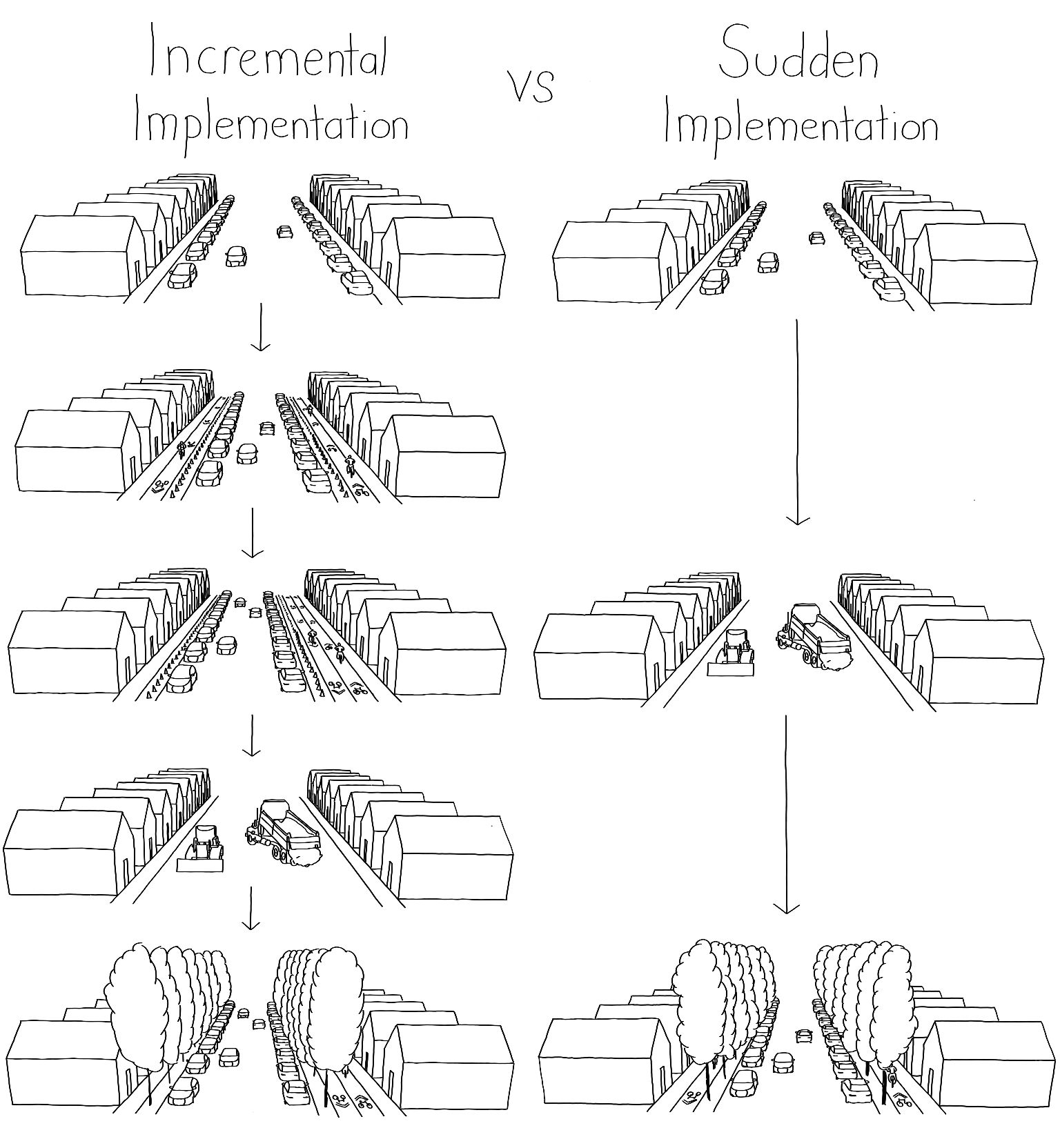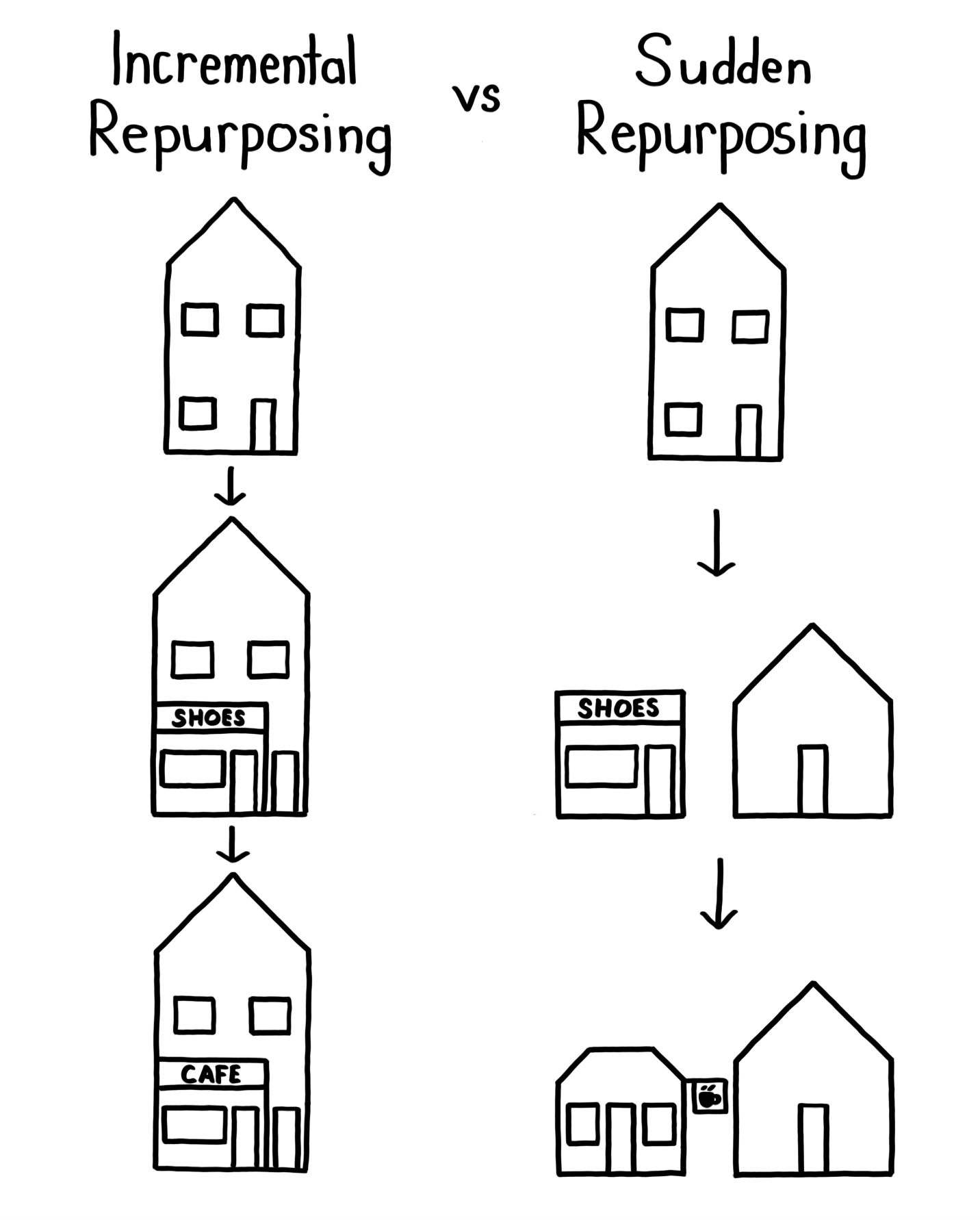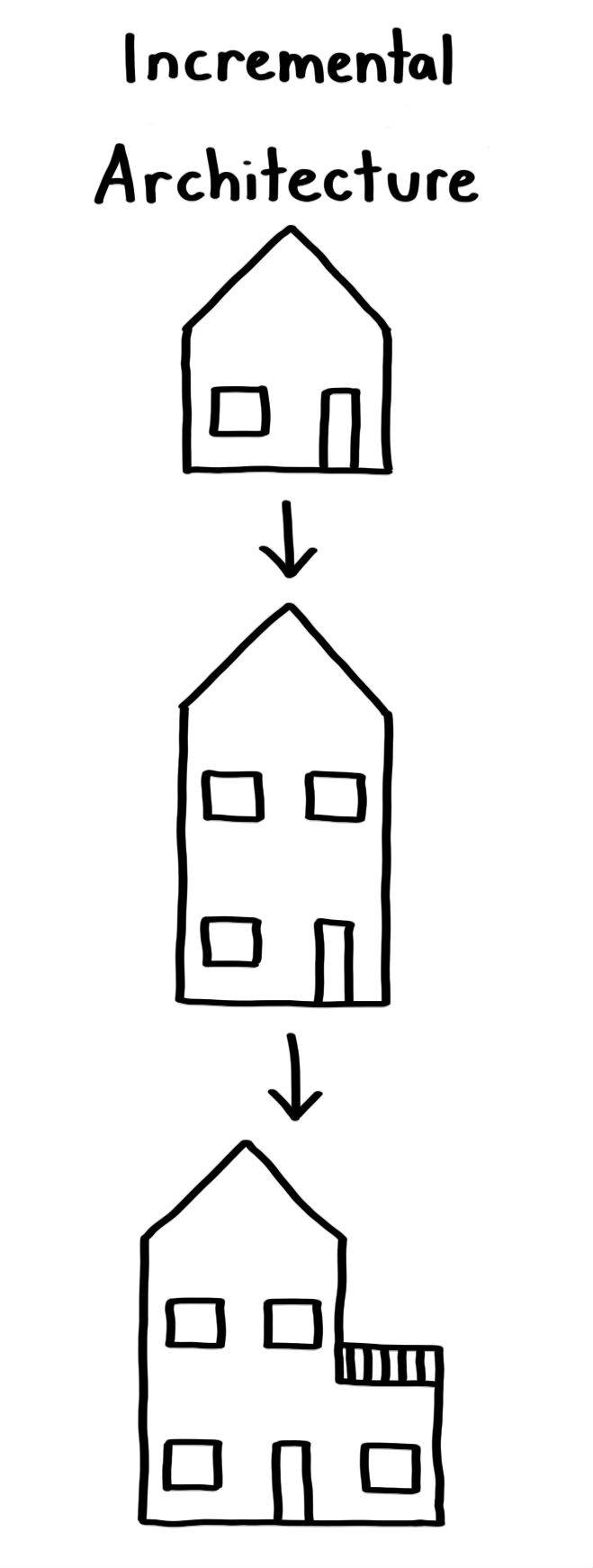Strong Towns talks a lot about incremental change as opposed to sudden change. But what exactly does it mean? Let's explore a few different forms that incrementalism can take, accompanied by hand drawn diagrams.
Incremental IntensificationLand-use patterns change over time. In the diagram below, we have a block of detached single family homes, and there is growing demand to accommodate more people.
On the left, we see incremental intensification: each lot is allowed to redevelop as its owner sees fit. Some of the single family homes turn into duplexes. Some time later, the least intensified lots (the single family homes) might turn into small apartment buildings. The remaining single family homes and duplexes turn into mid-rise apartment buildings.
On the right, we see sudden intensification, of a type that often occurs when the lot-by-lot conversions described above are either illegal according to the zoning code, or infeasible for one reason or another. The only practical action for homeowners is to hold on to their property until a large developer buys them all out and razes the block for a large apartment building (or even worse, the local government might use eminent domain to give private property to a large developer).
Incremental intensification often goes hand in hand with granularity. It keeps land ownership diversified, and it enforces good urban bones, since a separate building every so many feet means a destination such as a housefront or a shopfront every so many feet. It lowers the risk that an area will be negatively transformed, as it takes the form of many small bets (a few apartment buildings will pop up first, and if the demand is not there, no more apartment buildings will appear) rather than fewer large bets (the entire block is being replaced with 200 units). Smaller buildings on smaller lots are easier to redevelop for the next generation of owners and land uses, and facilitating incremental intensification decreases the impact of land speculators. We are always going to have the land speculator who refuses to develop until either the time is right or someone offers them a really large sum of money. I would rather the speculator sit on a few empty lots than entire blocks.
Incremental ImplementationRarely is our first attempt at something our best attempt. In the diagram below, a city wants to improve a street by planting trees and installing bike lanes.
On the left, we see an incremental implementation: the city used cones and chalk to show where the bike lanes and trees would go. They tested it out for a few weeks, observed how people used it, then they washed the chalk off and tried a different configuration. They finally settled on a layout that worked before they spent six figures repaving the street and installing trees.
On the right, we see a sudden implementation: the city drew up plans, and spent six figures to install trees and bike lanes.
Incremental implementation means looking for low cost ways to rapidly prototype and iteratively improve. Henry Ford has a famous quote: "If I'd asked people what they wanted, they'd have asked for faster horses." As with all products, the best way to design a product is to see what sells and watch people use it. By testing out the placement of the bike lanes and trees with chalk and cones first, we were able to try out multiple configurations and we even have the option of rolling back before we spent too much money. Because rapid prototyping is cheap, it can be scaled cheaply and quickly. We could roll out a citywide bike network using cones and chalk in less time and with less money than repaving even a few streets.
Incremental RepurposingIt is often cheaper, faster, and less resource-intensive to adapt and reuse what already exists than to build new each time. The diagram below explores a lot that evolves from housing two families, to housing a family and a shoe store, to housing a family and a cafe.
On the left, the ground floor of the building was converted to retail space. The retail space is an empty shell that could house many tenants over its lifetime.
On the right, the duplex was demolished for a house and a purpose built shoe store. When the shoe store left, the old shoe store was demolished for a purpose built cafe.
Our older urban areas and main streets are filled with buildings that have seen many generations of owners and uses. Zoning codes that allow uses to be mixed together, and allow older buildings to be incrementally updated (rather than denying any modifications because the older use no longer conforms to newer zoning or building codes), encourage buildings to be reused rather than demolished and rebuilt. We can also, in designing buildings, be mindful of varied potential uses. This might involve building in adaptability through features such as taller ceilings on the ground floor so it can be converted to retail, flat floors on parking garages so they can be converted to other uses, etc.
Reusing existing structures is cheaper, more environmentally sound (less waste from demolishing the old building and fewer new resources required for the new building), and faster than rebuilding anew, and is important to help prevent old buildings from being abandoned or sitting vacant for years.
Incremental ArchitectureIncremental architecture is the least common form of incrementalism, but it does happen. You often see this with large public buildings: the shopping mall adds on an expansion. The school constructs an extension so they can fit in more classrooms and a new gym. A house adds on a garage. Even more rare is when an existing building adds an extra floor (the lower floors would either have to be reinforced or have been initially constructed with the ability to support the load of additional floors in mind).
These are just some forms of incrementalism. Incrementalism does not mean doing things slowly: incremental development can be rapid and up to the task of reacting to pressing needs and dramatic societal changes. Incrementalism looks like experimenting, rapid prototyping, iteratively improving, and reducing the risks of bad decisions.



